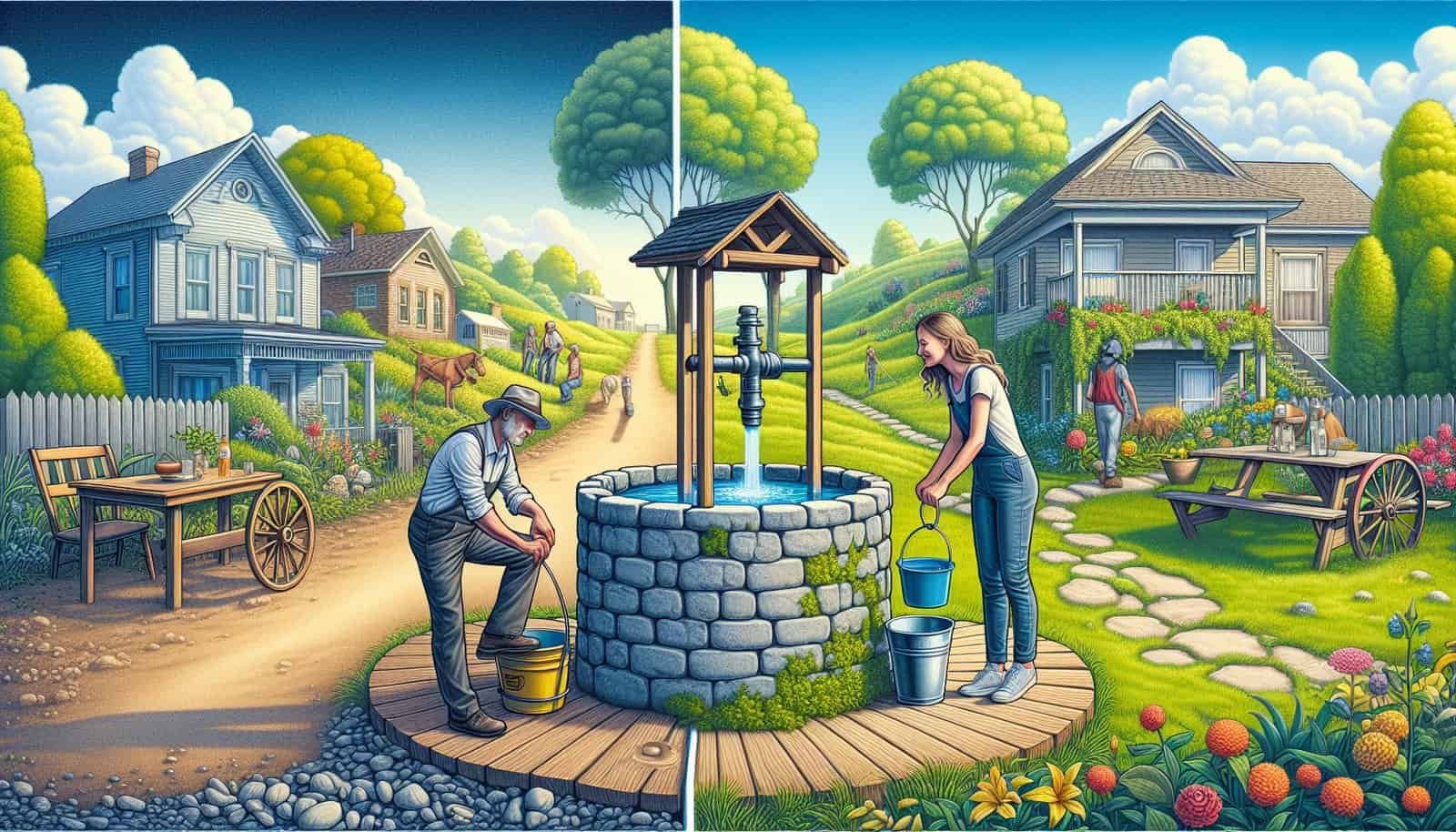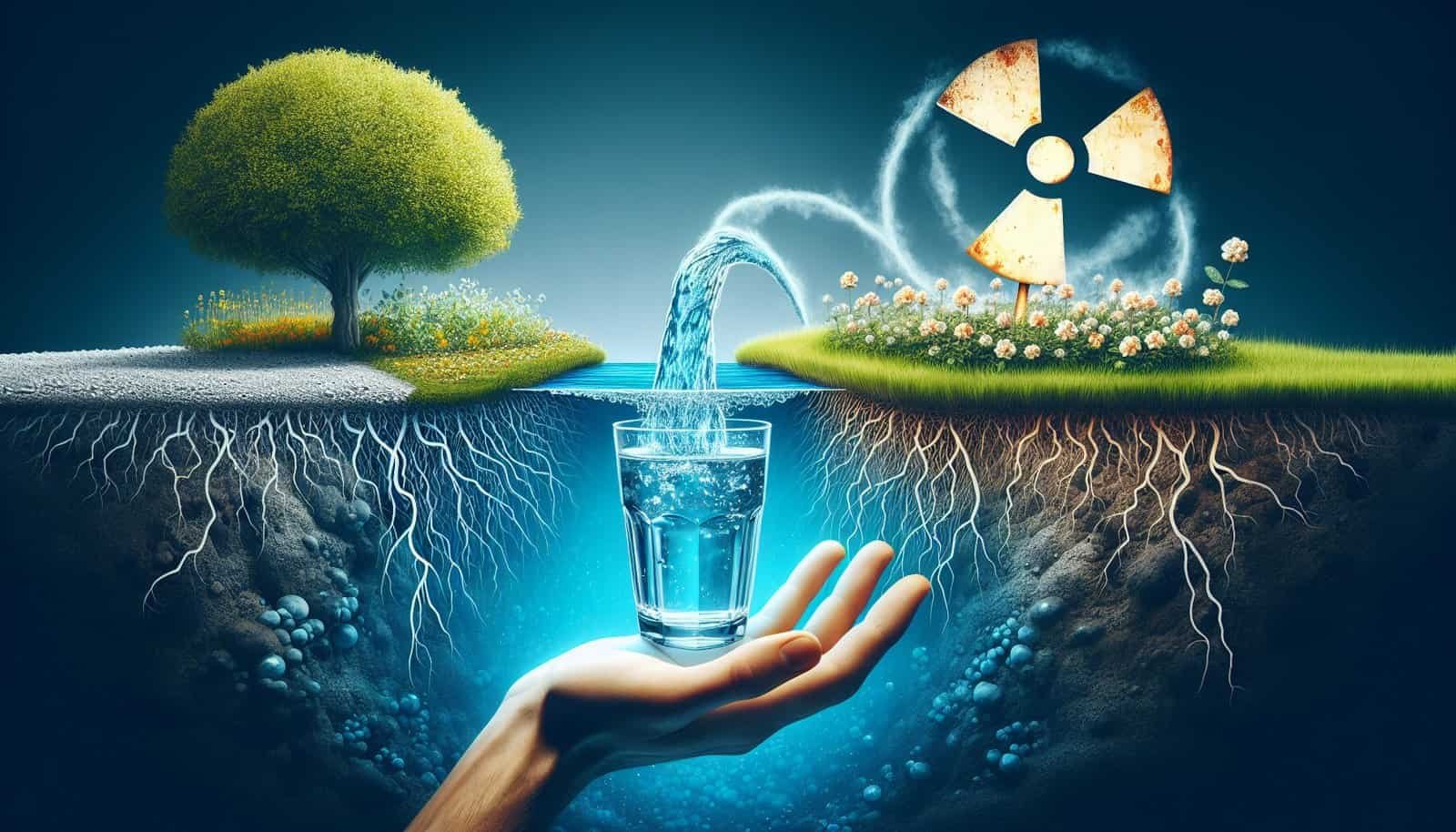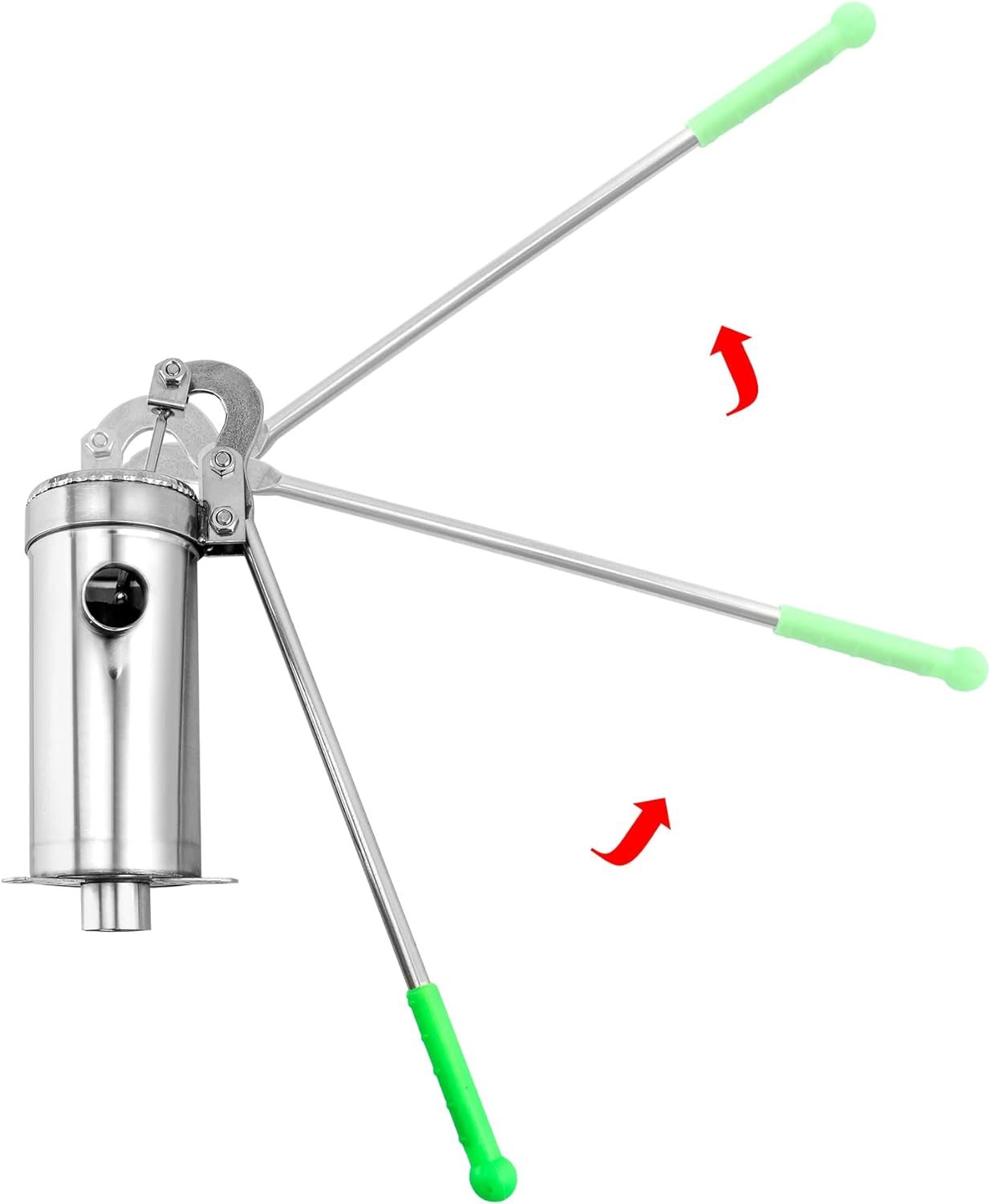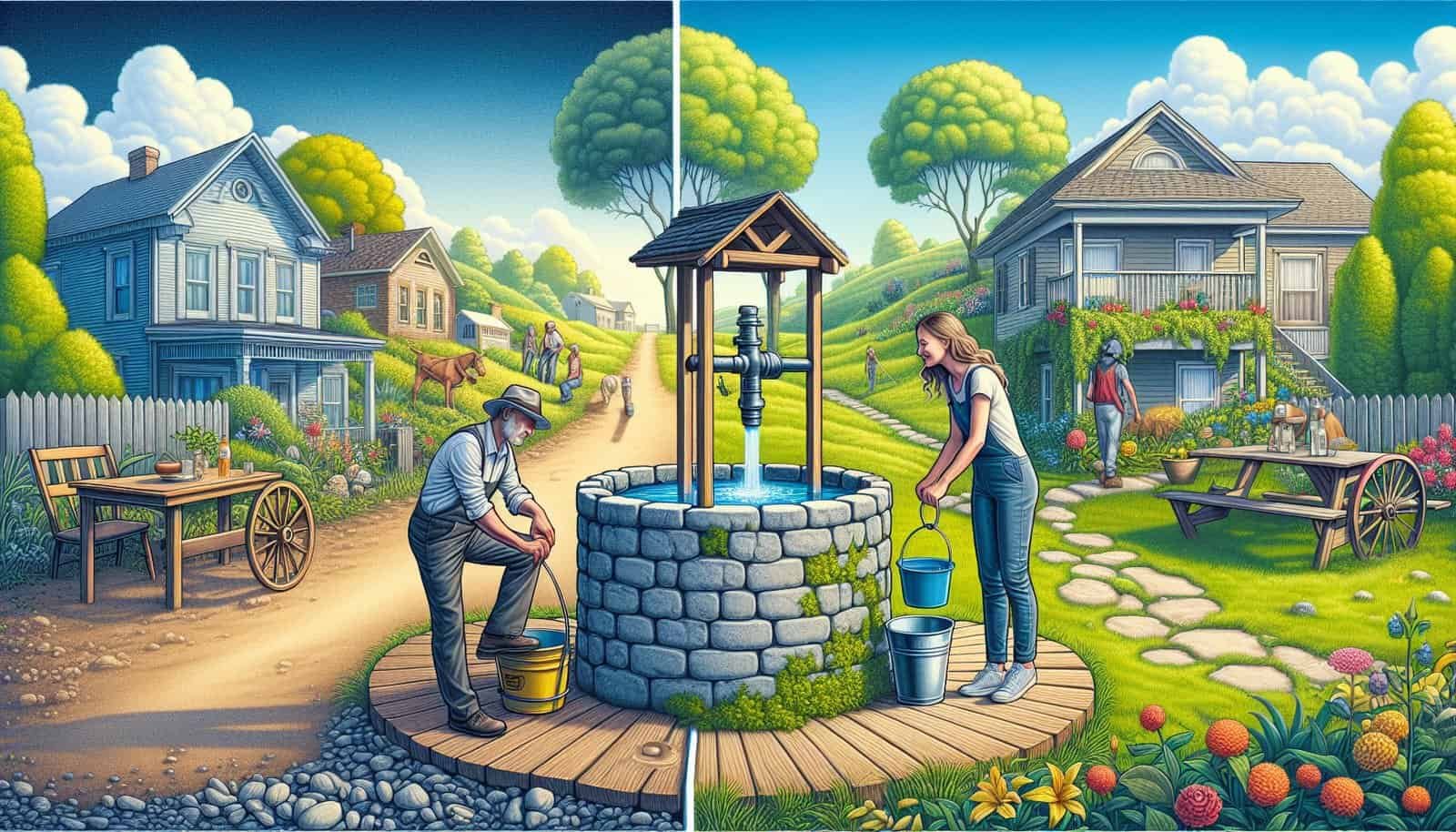Discover the alarming impact of human actions on water wells worldwide. This eye-opening article sheds light on the contamination of wells and advocates for the protection of these vital resources. With thought-provoking insights and valuable information, it highlights the safety concerns, maintenance deadlines, and quality of well water. Dive into the article and learn about measures to prevent contamination, find resources for well owners, and explore product reviews of efficient water pumps. Gain a deeper understanding of the devastating consequences of human actions on water wells and the urgent need for preservation.
Impact of Human Actions on Water Wells Worldwide

Introduction
Water wells are essential sources of clean and safe water for millions of people around the world. However, human actions have significantly impacted these vital resources. From contamination to depletion and destruction of aquifers, the consequences of our actions on water wells are far-reaching. This article aims to explore the various ways in which human activities have affected water wells globally, and the subsequent implications for both the environment and society.
Contamination of Water Wells
Introduction to Water Well Contamination
Water well contamination refers to the introduction of harmful substances into the groundwater that supplies the well. Contaminated water poses severe health risks to those who rely on it for drinking, cooking, and bathing purposes. Understanding the sources of contamination is crucial in preventing further degradation of water wells.
Sources of Contamination
Water well contamination can occur due to various sources, including agricultural activities, improper waste disposal, industrial pollution, and inadequate sanitation practices. Each of these sources introduces different types of contaminants into the groundwater, threatening the quality and safety of the water supply.
Chemical Contaminants
Chemical contaminants in water wells can originate from agricultural pesticides, industrial chemicals, and household waste, among other sources. These contaminants can have detrimental effects on human health, causing issues such as gastrointestinal problems, organ damage, and even cancer. Preventing the introduction of these chemicals into the groundwater is essential for ensuring the safety of water wells.
Biological Contaminants
Biological contaminants in water wells are typically introduced through human and animal waste. Pathogens such as bacteria, viruses, and parasites can cause waterborne diseases, including diarrheal illnesses and gastrointestinal infections. Proper sanitation practices and regular testing of well water are crucial in preventing the spread of these harmful pathogens.
Effect on Water Quality
Contaminants in water wells can significantly degrade the quality of the water. Chemical contaminants can alter the taste, odor, and appearance of water, making it unpalatable and unpleasant to use. Biological contaminants can introduce pathogens that compromise the safety of the water, posing serious health risks.
Health Risks Associated with Contaminated Water
Drinking, bathing, or consuming contaminated water can lead to various health issues, ranging from mild to severe. Waterborne diseases, such as cholera, typhoid, and hepatitis, can spread through contaminated water sources. Ingesting chemical contaminants can lead to long-term health effects, including developmental issues, reproductive problems, and neurological disorders. Ensuring the safety and purity of water wells is crucial for protecting public health.
Depletion of Water Resources
Excessive Groundwater Extraction
The excessive extraction of groundwater poses a significant threat to water wells worldwide. As populations grow and demand for water increases, the unsustainable extraction of groundwater has led to a rapid depletion of water resources. This overuse of groundwater has severe implications for both the environment and the availability of water for future generations.
Impact on Water Availability
Depleting water resources can result in reduced water availability for communities that rely on water wells. As groundwater levels decline, the capacity of wells to provide an adequate water supply diminishes. This scarcity of water can lead to conflicts over water resources and disproportionately impact vulnerable communities.
Effects on Ecosystems
The depletion of groundwater affects not only human populations but also ecosystems that rely on underground water sources. Wetlands, rivers, and lakes are all interconnected with groundwater, and their health and biodiversity depend on a sustainable water supply. The impact of depleting groundwater on ecosystems can lead to the loss of habitats, species extinction, and disruption of ecological balance.
Water Scarcity and Drought
The depletion of water resources through excessive groundwater extraction exacerbates the issue of water scarcity and drought. As water wells run dry, communities are left without reliable access to clean water, resulting in increased reliance on alternative, often unsafe, water sources. Drought-prone regions are particularly vulnerable to the effects of groundwater depletion, as they already face water scarcity challenges.
Inequitable Distribution of Water
The depletion of water resources can further exacerbate existing inequalities in water access. Communities that have limited resources may struggle to compete for water, while wealthier communities have greater access to alternative water sources. This unequal distribution of water resources perpetuates social and economic disparities and hinders efforts to achieve global water equity.
Destruction of Aquifers
Overpumping and Aquifer Depletion
Overpumping, or extracting groundwater at a rate faster than it can be replenished, is a significant factor in the destruction of aquifers. This unsustainable practice depletes the underground reservoirs, leading to a loss of storage capacity and the eventual drying up of wells. The destruction of aquifers has severe consequences for both water availability and ecosystem health.
Subsidence and Land Sinking
Over-extraction of groundwater can also result in land subsidence, which is the sinking or settling of the Earth’s surface. As groundwater is removed, the soil loses its support, leading to the compaction and settling of the land above. Subsidence can cause structural damage to buildings, infrastructure, and natural features, further exacerbating the negative impacts of aquifer destruction.
Saltwater Intrusion
The destruction of aquifers can also result in saltwater intrusion, where saline water from the ocean infiltrates freshwater aquifers. As the water level in the aquifer drops, the pressure gradient changes, allowing saltwater to migrate inland. This intrusion of saltwater renders the freshwater unfit for consumption, posing a significant threat to communities reliant on water wells.
Loss of Natural Springs
Aquifer destruction can lead to the loss of natural springs, which are important freshwater sources that emerge from the ground. Springs are critical for maintaining the ecological balance of ecosystems, supporting biodiversity, and ensuring a constant flow of water to rivers and streams. The destruction of aquifers can disrupt this natural process, leading to the loss of these valuable freshwater sources.
Consequences for Agriculture and Irrigation
The destruction of aquifers has profound consequences for agriculture and irrigation, which heavily rely on groundwater. As water wells dry up and water availability decreases, farmers and agricultural communities face challenges in irrigating their crops and ensuring food security. The destruction of aquifers can jeopardize agricultural livelihoods and lead to economic losses.

Pollution from Industrial Activities
Introduction to Industrial Pollution
Industrial activities contribute significantly to water well contamination worldwide. The discharge of chemicals, heavy metals, and pollutants into surrounding water bodies can infiltrate groundwater and contaminate water wells. Understanding the sources and impacts of industrial pollution is essential in mitigating the negative effects on water resources.
Chemical Discharges and Contaminants
Industrial processes involve the use of various chemicals, many of which are harmful to human health and the environment. Improper disposal of these chemicals can lead to their infiltration into groundwater, contaminating nearby water wells. Common industrial contaminants include heavy metals, solvents, petroleum byproducts, and pesticides.
Heavy Metals and Toxins
Industrial activities often release heavy metals such as lead, mercury, cadmium, and arsenic into water sources. These heavy metals are highly toxic and can cause severe health issues, including organ damage, developmental disorders, and neurological disorders. Preventing the release of heavy metals into the environment is crucial for protecting water wells and public health.
Waste Disposal Practices
Improper waste disposal practices by industries contribute to water well contamination. Inadequate treatment and disposal of industrial wastewater can result in the discharge of pollutants directly into water bodies, which can eventually seep into groundwater. Proper waste management practices, including wastewater treatment and recycling, are necessary to prevent contamination of water wells.
Runoff and Surface Water Pollution
Industrial activities generate runoff containing various pollutants, which can contaminate surface water and eventually infiltrate groundwater. Pollution from runoff includes chemicals, sediments, fertilizers, and pesticides. The contamination of surface water sources, such as rivers and lakes, can have far-reaching effects on communities that rely on water wells for their water supply.
Inadequate Sanitation Practices
Impact of Poor Sanitation on Water Wells
Inadequate sanitation practices can have a significant impact on the contamination of water wells. Improper disposal of human waste, sewage, and septic systems can introduce harmful pathogens and contaminants into groundwater, compromising the safety and quality of the water supply.
Contamination from Sewage and Septic Systems
Sewage and septic systems that are not properly maintained or located too close to water wells pose a risk of contaminating the groundwater. Improperly treated or discharged sewage can introduce pathogens, bacteria, and viruses into the groundwater, making it unsafe for human consumption.
Effect on Groundwater Quality
Inadequate sanitation practices directly affect the quality of groundwater. Pathogens and contaminants from sources such as sewage and septic systems can infiltrate the groundwater, leading to bacterial and viral contamination. Regular maintenance and proper siting of septic systems are essential in preventing the contamination of water wells and safeguarding public health.
Waterborne Diseases
Waterborne diseases are a direct consequence of inadequate sanitation practices. Pathogens such as bacteria, viruses, and parasites can thrive in contaminated water wells, leading to the spread of diseases such as cholera, dysentery, and giardiasis. Proper sanitation practices, including the provision of safe disposal systems and regular testing of well water, are essential for preventing the outbreak of waterborne diseases.
Importance of Proper Waste Management
Proper waste management practices, including the treatment and disposal of sewage and other waste streams, are crucial in preventing water well contamination. Implementing effective sanitation systems, ensuring wastewater treatment compliance, and promoting hygiene education are essential steps in maintaining the integrity of water wells and protecting public health.

Effect on Biodiversity
Introduction to Biodiversity Loss
The impact of human actions on water wells extends beyond human health and environmental degradation. It also has severe implications for biodiversity, particularly in aquatic ecosystems. The destruction of water wells and contamination of groundwater can disrupt the delicate balance of these ecosystems and lead to biodiversity loss.
Impact on Aquatic Ecosystems
Aquatic ecosystems, such as rivers, lakes, and wetlands, depend on a consistent supply of clean water from groundwater sources. The destruction of water wells and contamination of groundwater can disrupt the flow of water, affecting the ecological balance and biodiversity of these ecosystems. Loss of suitable habitat, changes in water quality, and reduced availability of resources can threaten the survival of many species.
Disruption of Food Chains
Biodiversity loss in aquatic ecosystems can disrupt food chains and ecological relationships. Changes in water quality and habitat availability can affect the distribution and abundance of species, leading to imbalances in predator-prey relationships and nutrient cycling. The consequences of these disruptions can have cascading effects throughout the ecosystem, ultimately impacting the health and stability of these complex systems.
Loss of Habitat
The destruction of water wells and the depletion of groundwater can lead to the loss of critical habitats for aquatic species. Many species rely on groundwater-fed ecosystems for breeding, feeding, and shelter. The loss of suitable habitat can result in the decline or extinction of certain species, affecting the overall biodiversity of these ecosystems.
Threatened and Endangered Species
As biodiversity declines due to human actions on water wells, many species become threatened or endangered. Dependence on groundwater for survival makes these species particularly vulnerable to the destruction and contamination of water wells. Preserving water wells and protecting groundwater sources are vital for safeguarding the habitats and populations of endangered species.
Social and Economic Consequences
Water-Related Diseases and Health Issues
Contaminated water wells contribute to a range of water-related diseases and health issues. Communities that rely on these wells for their water supply are at risk of contracting waterborne illnesses, leading to increased healthcare costs, decreased productivity, and a lower quality of life. The burden of water-related diseases falls disproportionately on vulnerable populations, exacerbating social and economic disparities.
Agricultural Impacts
Agricultural communities heavily rely on water wells for irrigation and crop production. The depletion and contamination of water wells significantly impact agricultural productivity and food security. Reduced water availability can lead to lower crop yields, crop failures, and loss of income for farmers. These impacts have far-reaching consequences for local economies and food systems.
Livelihoods and Economic Losses
The destruction and contamination of water wells can have severe economic consequences for communities. Industries that depend on a reliable source of clean water, such as tourism, manufacturing, and agriculture, may suffer from decreased productivity, increased costs, and potential closures. The loss of livelihoods and economic opportunities further hinders the development and prosperity of affected communities.
Water as a Source of Conflict
The competition for limited water resources can lead to conflicts among communities, regions, and even nations. The destruction and contamination of water wells exacerbate existing tensions and increase the likelihood of conflicts arising from water scarcity. These conflicts further compound the social, economic, and environmental challenges associated with the impact of human actions on water wells.
Displacement and Migration
In extreme cases, the destruction and contamination of water wells can lead to forced displacement and migration. Communities that no longer have access to a reliable source of clean water may be forced to relocate in search of suitable water sources. The displacement of communities further strains resources, disrupts social structures, and contributes to the overall instability of affected areas.

Lack of Access to Clean Water
Global Water Crisis
The impact of human actions on water wells is closely linked to the global water crisis. Around the world, millions of people lack access to safe and clean water. The destruction and contamination of water wells exacerbate this crisis, leaving many communities without a reliable source of clean water for their daily needs.
Impact on Developing Countries
Developing countries are disproportionately affected by the lack of access to clean water. The destruction and contamination of water wells further exacerbate existing challenges, hindering development and perpetuating poverty. The burden of waterborne diseases, water scarcity, and economic losses falls heavily on these communities, impeding progress and well-being.
Health and Education
Lack of access to clean water hinders health and education outcomes, particularly in developing countries. Waterborne diseases and poor sanitation practices contribute to high morbidity and mortality rates, particularly among children. The time and effort required to collect water from distant or contaminated sources also impact educational opportunities, particularly for girls who often shoulder the responsibility of water collection.
Gender Disparities
The lack of access to clean water disproportionately affects women and girls. These gender disparities are often rooted in cultural and societal norms, where women are tasked with water collection and household responsibilities. The burden of water collection, particularly from distant or contaminated sources, limits educational and economic opportunities for women, perpetuating gender inequalities.
Water as a Human Right
Access to clean water is recognized as a basic human right by the United Nations. The destruction and contamination of water wells impede the realization of this right, particularly for vulnerable populations. Ensuring universal access to clean water should be a priority for governments, international organizations, and communities worldwide.
Challenges in Well Rehabilitation and Maintenance
Importance of Well Rehabilitation
Rehabilitating water wells is a crucial step in restoring the functionality and safety of these vital resources. Well rehabilitation involves repairing or enhancing the well infrastructure, improving water quality, and implementing sustainable management practices. By addressing the issues that affect water wells, rehabilitation efforts can ensure a consistent and reliable water supply for communities.
Lack of Resources and Expertise
Well rehabilitation and maintenance require adequate resources and expertise. Many communities, particularly in developing countries, lack the financial means and technical knowledge to rehabilitate and maintain their water wells effectively. Addressing this challenge requires increased investment in well infrastructure, capacity-building initiatives, and knowledge-sharing platforms.
Infrastructure and Technology
Inadequate well infrastructure and outdated technologies pose challenges to rehabilitation and maintenance efforts. Aging wells may require significant repairs or upgrades to ensure their long-term sustainability. Investing in modern technologies, such as efficient pumping systems and water treatment techniques, can improve the reliability and safety of water wells.
Financial Constraints
Financing well rehabilitation and maintenance projects is often a significant hurdle. Lack of funds can hinder efforts to address contamination, repair infrastructure, and implement sustainable management practices. Securing financial support from governments, non-governmental organizations, and international funding agencies is crucial in overcoming these financial constraints.
Community Engagement and Awareness
Community engagement and awareness are essential in successful well rehabilitation and maintenance. Educating communities about the importance of water well care, promoting proper sanitation practices, and involving community members in decision-making processes contribute to the long-term sustainability of water wells. Empowering communities to take ownership of their water resources fosters a sense of responsibility and pride.
In conclusion, human actions have had a profound and wide-ranging impact on water wells worldwide. Water well contamination, depletion of water resources, destruction of aquifers, pollution from industrial activities, inadequate sanitation practices, effect on biodiversity, social and economic consequences, lack of access to clean water, and challenges in well rehabilitation and maintenance are all significant issues that need to be addressed. By understanding these challenges and taking proactive measures to protect and preserve water wells, we can ensure the availability of clean and safe water for future generations.


